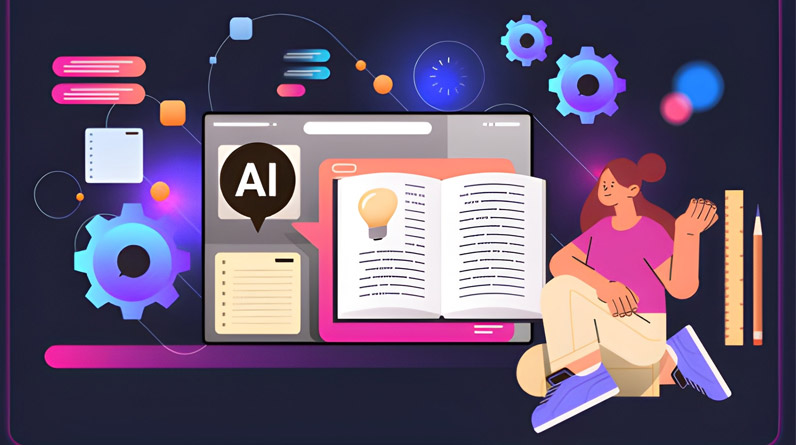The Paradox We’re Missing: Why AI’s Success Reveals Human Creativity’s True Value
Here’s the irony nobody talks about: as AI writing tools become exponentially better at generating content, human writing is becoming more valuable, not less. We’re living through a paradox where artificial intelligence is simultaneously proving it can produce serviceable content while exposing exactly what makes human creativity irreplaceable.
In 2025, 73% of marketers are already using generative AI in their workflows. ChatGPT can write a blog post in seconds. Yet the narrative isn’t “humans are obsolete.” Instead, we’re witnessing a fundamental shift in how we define creativity, value originality, and understand what truly moves people.
This article explores a perspective often overlooked in the AI vs. human writing debate: AI isn’t replacing human creativity—it’s illuminating it.
Understanding the Playing Field: What AI Can and Cannot Do in 2025
What AI Writing Tools Excel At
Let’s be clear about AI’s genuine strengths. Modern language models are genuinely impressive at specific tasks:
- Rapid Content Generation: AI can produce thousands of words in minutes, making it invaluable for time-sensitive content needs.
- Data-Driven Optimization: AI analyzes search trends, user engagement metrics, and SEO performance to tailor content for maximum visibility.
- Structural Consistency: AI excels at maintaining grammatical accuracy, tone consistency, and readability standards across large volumes of content.
- Research Acceleration: AI can summarize vast amounts of information, extract key points, and identify trends faster than human researchers.
- Brainstorming Catalyst: AI serves as a powerful ideation partner, offering suggestions that can spark human innovation and overcome creative blocks.
These capabilities are genuinely transformative for certain industries. Journalism, marketing, and corporate communications have all benefited from AI’s efficiency gains.
The Irreplaceable Gap: What AI Fundamentally Cannot Do
Yet there’s a canyon of difference between “serviceable” and “meaningful.” Here’s what AI writing tools cannot replicate:
| Capability | AI Limitations | Human Advantage |
|---|---|---|
| Emotional Authenticity | Can simulate emotion through pattern matching; lacks lived experience | Draws from genuine human experiences, creating visceral reader connection |
| Cultural Nuance | Struggles with idioms, cultural context, and subtle social references not in training data | Naturally understands cultural implications and sensitivities |
| Originality | Recombines existing patterns; cannot innovate beyond training data boundaries | Creates unprecedented ideas by combining intuition, experience, and imagination |
| Ethical Judgment | Operates on statistical probability; lacks moral reasoning | Weighs ethical implications and considers societal impact |
| Long-Form Narrative Coherence | Struggles with complex plot arcs, character development, sustained emotional tension | Understands narrative structure intuitively through storytelling traditions |
The pattern is clear: AI excels at execution, but humans dominate intention. AI can build the house; humans design the meaning behind it.
The Hidden Cost of AI Adoption Nobody Discusses
While marketing teams celebrate productivity gains, something quieter is happening in the writing world. There’s a hidden cost to AI adoption that goes beyond job displacement:
1. The Devaluation of Professional Writing
When anyone can generate “acceptable” content in seconds, the perceived value of expert writing plummets. Clients demand lower rates. Quality standards blur. The market becomes flooded with mediocre AI-generated content, which paradoxically makes genuine human writing even harder to monetize.
2. The Skill Atrophy Problem
There’s a psychological cost to outsourcing thinking. When writers rely heavily on AI for drafting and ideation, something atrophies: the muscle memory of creative struggle. Innovation often emerges from friction, from wrestling with ideas until they become something new. AI removes that friction, potentially diminishing the very creativity it’s supposed to enhance.
3. The Authenticity Crisis
As the internet becomes saturated with AI-generated content, readers are developing what researchers call “authenticity fatigue.” They’re craving genuine human voice more intensely precisely because it’s becoming rarer. This creates a new paradox: the more AI content exists, the more valuable authentic human writing becomes.
The Real Story: AI Isn’t Replacing Writers—It’s Forcing Them to Evolve

Rather than seeing AI as a replacement threat, consider this: AI is clarifying what human creativity actually requires.
The writers thriving in 2025 aren’t competing with AI on efficiency. They’re leveraging three core human competencies that AI cannot replicate:
1. Emotional Intelligence and Empathy
Writers who tap into genuine human emotion—vulnerability, struggle, joy, transformation—are creating work that resonates deeply. AI can describe these emotions; humans must embody and transmit them.
2. Strategic Thinking and Intentionality
The writers winning aren’t just producing content; they’re solving problems, advancing arguments, and shaping narratives with clear intention. This requires understanding the broader context, audience psychology, and desired outcomes—domains where human judgment reigns supreme.
3. Cultural and Contextual Mastery
Understanding the subtle shifts in cultural conversation, knowing what will resonate in specific communities, recognizing when to break conventions—these require lived experience and cultural intuition that AI simply cannot access.
Case Study: How Leading Organizations Are Actually Using AI in 2025
The Smart Integration Model
Successful organizations aren’t replacing writers with AI. They’re augmenting writers with AI.
Here’s how it works in practice:
- Research Phase: AI rapidly summarizes industry data, trends, and competitive information. Human writer synthesizes this into strategic insights.
- Ideation Phase: AI suggests headlines, angles, and structural approaches. Human writer selects, refines, and redirects based on strategic goals.
- Drafting Phase: Depending on content type, AI might generate initial drafts or specific sections. Human writer shapes, rewrites, and injects voice.
- Refinement Phase: AI handles consistency checks and optimization. Human writer ensures authenticity, accuracy, and emotional resonance.
- Publication Phase: Human writer maintains full editorial control and accountability for the final product.
The result? Writers produce more content faster while maintaining quality and authorial control. Productivity increases without sacrificing authenticity.
The Skills Revolution: What Writers Actually Need to Master in 2025
The traditional writing skill set is evolving. Today’s successful writers need:
- AI Literacy: Understanding what AI can and cannot do, knowing when and how to leverage it effectively.
- Strategic Direction: Ability to set clear intentions for content before writing begins—AI works best when given direction.
- Fact-Checking Rigor: Since AI can fabricate information, writers must verify everything before publication.
- Editorial Judgment: Ability to recognize when AI output is genuinely good versus when it’s superficially adequate.
- Human Connection: Skills in empathy, storytelling, and authentic voice—the irreplaceable human elements.
Writers who develop these competencies aren’t worried about replacement. They’re becoming more valuable precisely because they understand how to leverage AI while maintaining human authenticity.
The Emerging Opportunity: Creative Direction in an AI World
Here’s what’s actually happening in 2025: the writing profession is bifurcating.
On one side are content factories—high-volume, low-cost, AI-generated content for commoditized markets. These serve a purpose but deliver diminishing returns because the output lacks differentiation.
On the other side are human-directed, AI-enhanced creatives—strategists who use AI as a tool while maintaining complete creative control. These professionals command premium rates precisely because their output resonates.
The opportunity isn’t in competing with AI’s speed. It’s in delivering what AI structurally cannot: meaning, connection, and authenticity.
Looking Forward: The Real Future of Writing
By 2035, this won’t be a debate anymore. AI writing tools will be as ubiquitous as spell-check. The question won’t be “Can AI replace writers?” but rather “What kind of writer do you want to be?”
The writers who will thrive are those who understand a fundamental truth: AI doesn’t make human creativity obsolete—it makes it more essential.
When basic content generation requires no human involvement, the human voice becomes premium. When efficiency is guaranteed, authenticity becomes scarce. When algorithms can produce the obvious, originality becomes valuable.
The Bottom Line: Collaboration, Not Competition
AI writing tools in 2025 are not replacing human creativity. They’re clarifying it, illuminating it, and paradoxically making it more valuable. The future belongs to writers who see AI not as a threat but as a collaborator—a tool that handles the mechanical work so humans can focus on the meaningful work.
The writers who adapt will thrive. The content that endures will be human-crafted, perhaps AI-enhanced, but ultimately rooted in the irreplaceable elements that make us human: emotion, intention, authenticity, and connection.
That’s not something any algorithm can replicate. That’s the real story of AI writing in 2025.


